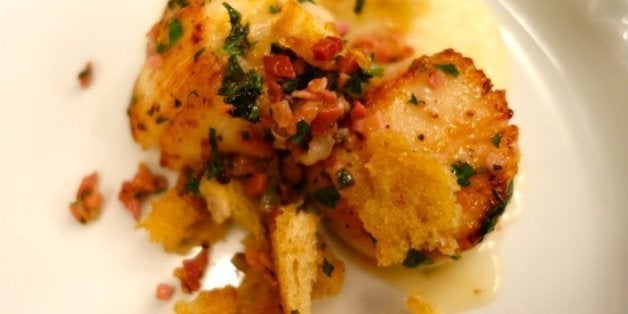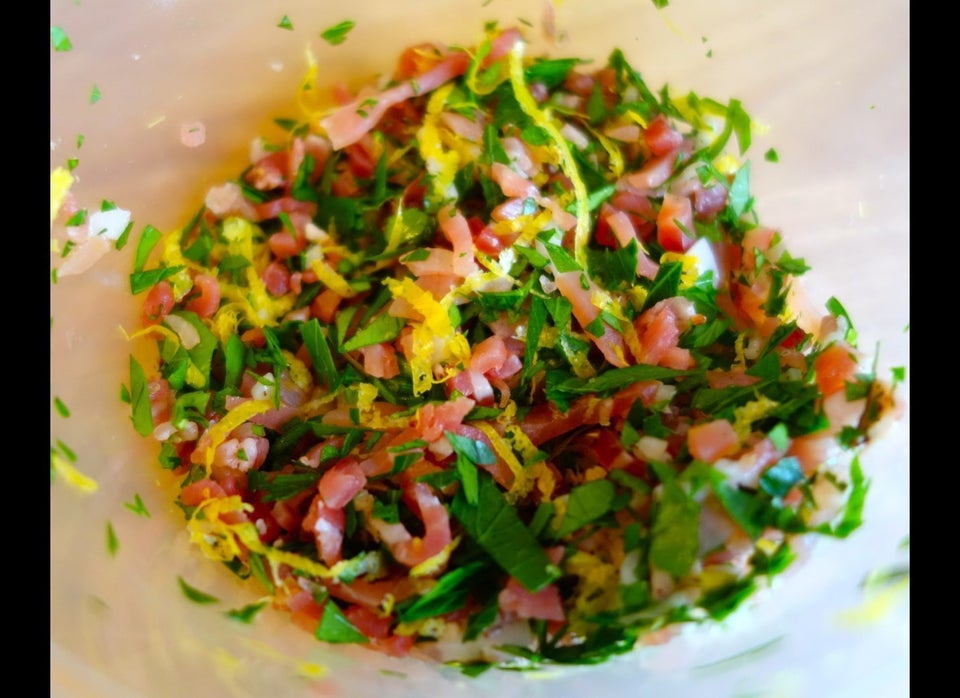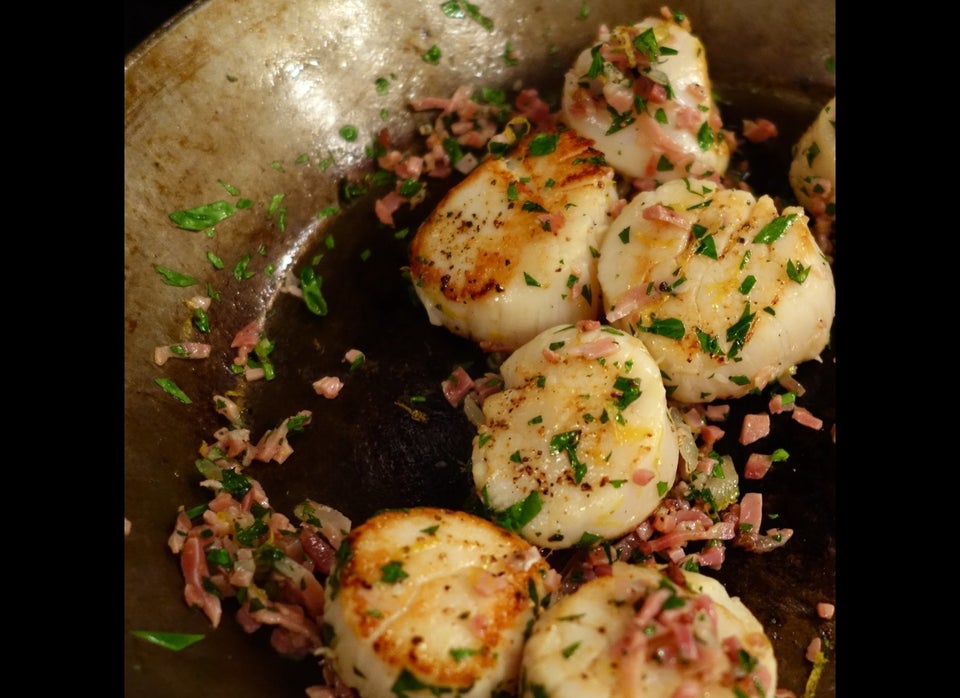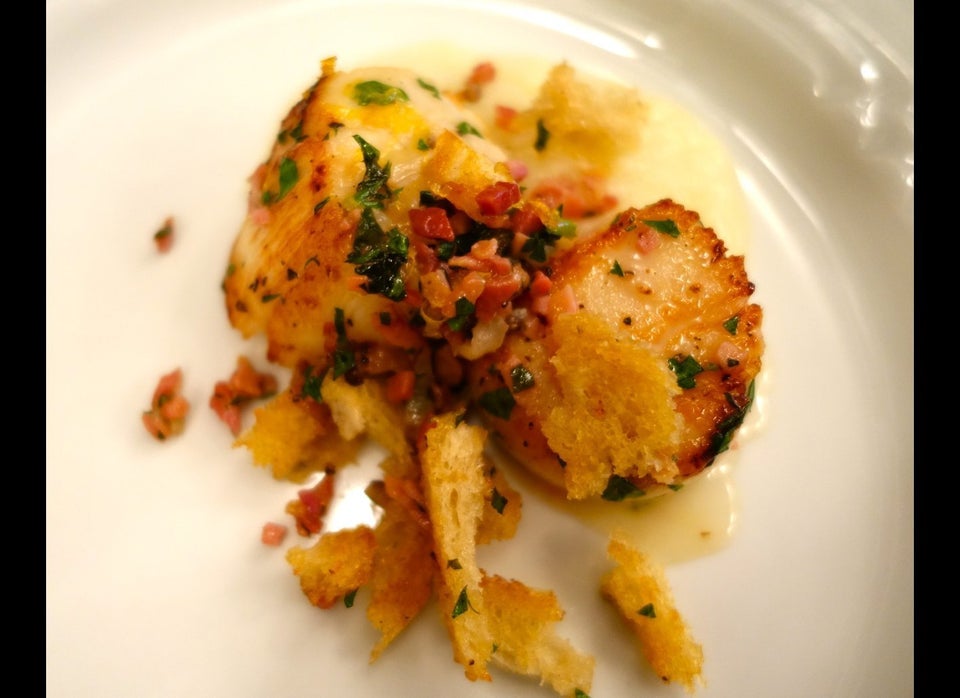
Lest anyone get the wrong idea, let me stipulate immediately that good fresh scallops don't need much gussying up. They don't even need cooking if they've come into the kitchen alive in their shells. That said, scallops are the focus of many memorable fancier dishes too: Think of the much-imitated Jean-Georges Vongerichten classic of sea scallops with caramelized cauliflower and caper-raisin emulsion, or of those old-fashioned dishes with creamy sauces run under the broiler to brown (which when well made have a lot of appeal).
I'm not proposing anything that elaborate here - just a way to produce a dinner-party-worthy scallop appetizer for when you want something a little more distinctive than plain scallops on a plate.
In some corner of my memory lay a neural link to the practice of wrapping scallops in bacon before cooking them. This has always seemed a bad idea: For one thing, smoky bacon in that quantity would elbow the scallop flavor right off the platter; for another, by the time the bacon was done the scallops would be long overcooked by modern standards. But the notion of a little cured, lightly smoky pork flavor was a good one, and I turned to my standby source of that flavor: Italian speck. Parsley and lemon zest (plus a little juice) would brighten and round out the flavors. And that was about it apart from some crunch from toasty morsels of bread.
Cooking scallops takes almost no time, so it was important to have everything ready before turning on the heat. For eight large sea scallops, I finely diced enough speck to generate around 1/3 cup loosely packed: a little handful. I chopped enough parsley to equal that quantity and grated the zest of half a large lemon, and combined the three ingredients in a little bowl. Quantities are not terribly important, but you'll want to be able to taste every element. I also tore up a few thin slices of baguette-like bread and made it into crisp little croutons (over low heat in a skillet with a drizzle of olive oil). The croutons are there for crunch and can be omitted.
I made sure the scallops were nice and dry, seasoned them with salt and pepper, then cooked them in a hot skillet with the merest slick of neutral oil. These were big - around 10 to the pound (say, 45 grams each) - so I cooked the first side for 90 seconds, until golden brown, then turned them and gave them another half a minute. Smaller scallops would have required less time. I then took the pan off the heat, added the speck mixture and tossed to combine. Finally, I finished the dish with a squeeze of lemon juice (not too much) and a few of the croutons, and spooned the scallops and their garnish onto our plates. This was a first course, so two of those big scallops were enough; five would have made an ample main dish. Little bay scallops (like queenies in the British Isles) would be terrific with this garnish but would need to be cooked for a total of perhaps 20 seconds over high heat.
This was at the height of my homemade-ricotta craze, when I was cooking and pureeing spring garlic (or onions) in lemon-flavored whey to make a nice thick sauce. The onion version was what completed this appetizer. Lacking that, a good tablespoon (say, 20 grams) of butter could go into the skillet when it comes off the heat, or it could be replaced by a buttery or creamy puree of another vegetable, such as cauliflower or rutabaga (swede) - or even carrot.
The key here is balance: the speck mixture did nothing to mask the characteristic ocean flavor of the scallops but it was apparent in every bite. It could work well with fish too, in which case you'd remove the beautifully browned fish from the pan before adding the garnish to warm through.


